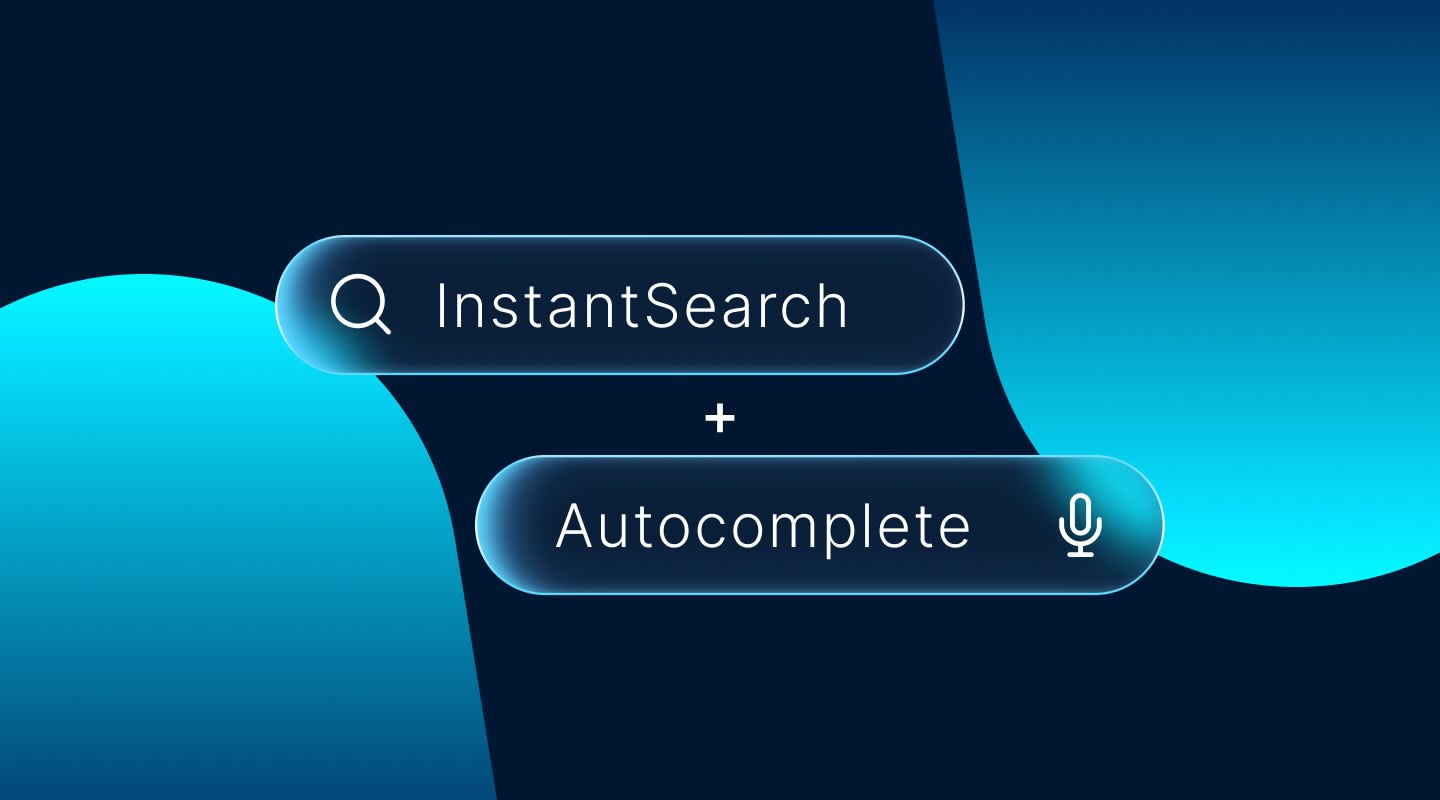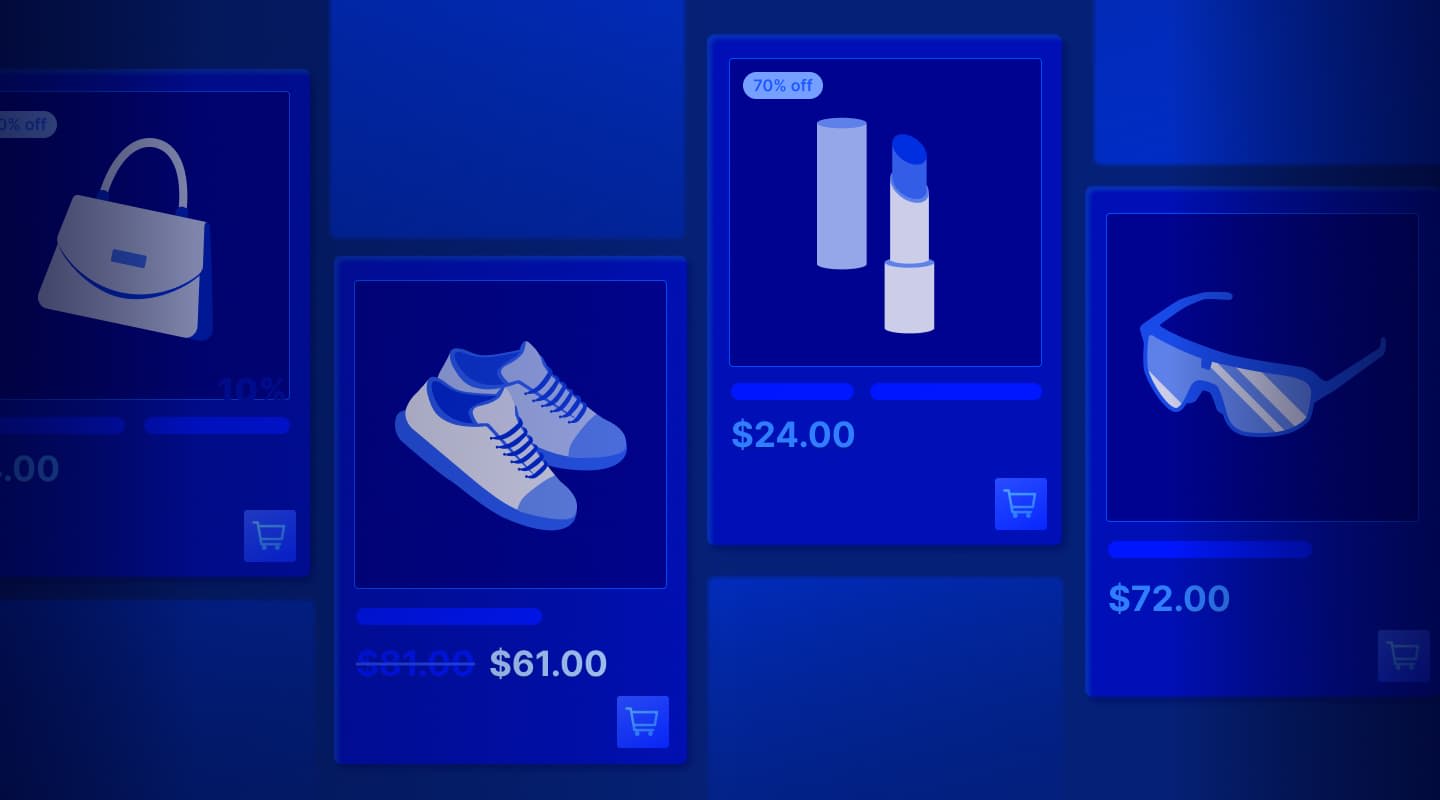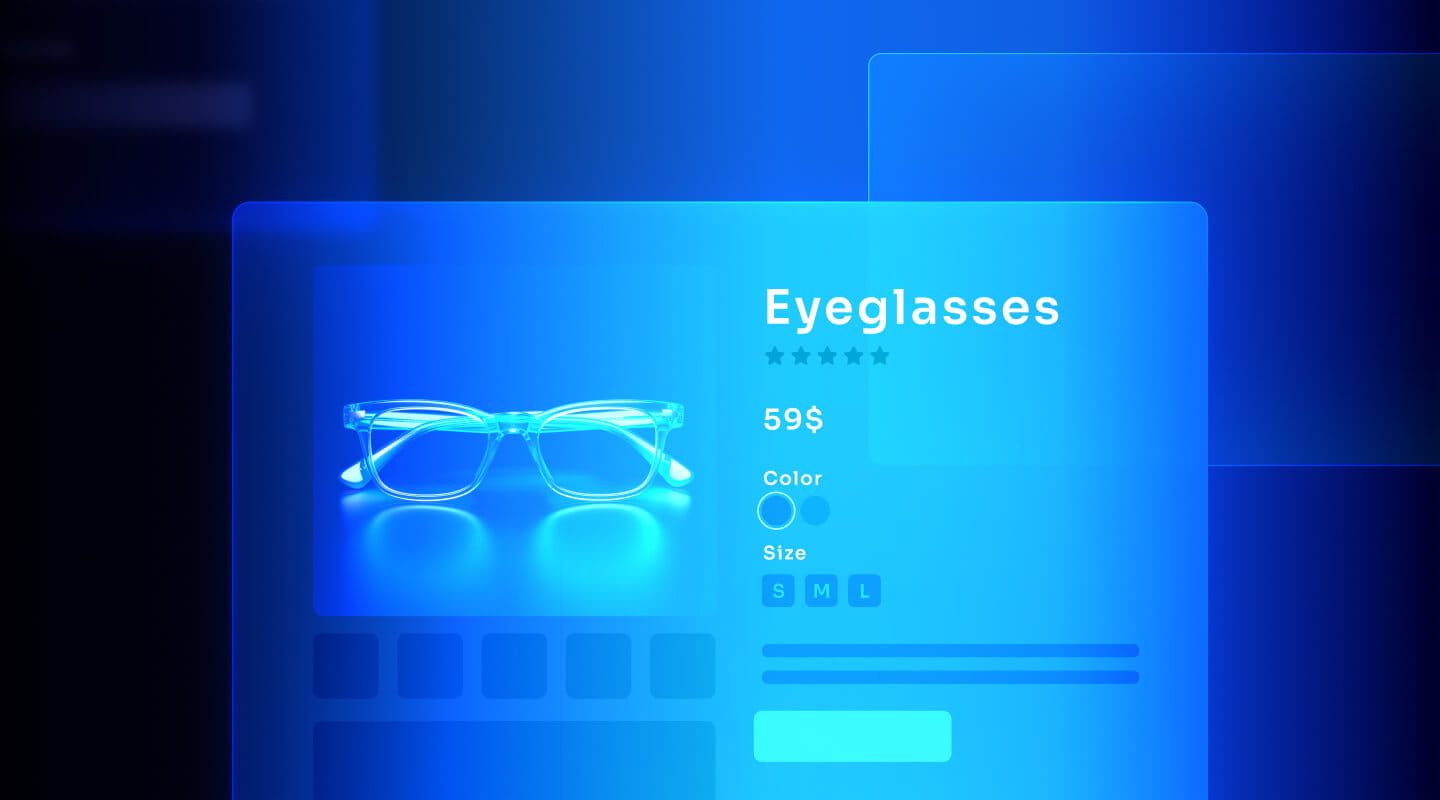Add InstantSearch and Autocomplete to your search experience in just 5 minutes
A good starting point for building a comprehensive search experience is a straightforward app template. When crafting your application’s ...
Senior Product Manager

A good starting point for building a comprehensive search experience is a straightforward app template. When crafting your application’s ...
Senior Product Manager

The inviting ecommerce website template that balances bright colors with plenty of white space. The stylized fonts for the headers ...
Search and Discovery writer

Imagine an online shopping experience designed to reflect your unique consumer needs and preferences — a digital world shaped completely around ...
Senior Digital Marketing Manager, SEO

Winter is here for those in the northern hemisphere, with thoughts drifting toward cozy blankets and mulled wine. But before ...
Sr. Developer Relations Engineer

What if there were a way to persuade shoppers who find your ecommerce site, ultimately making it to a product ...
Senior Digital Marketing Manager, SEO

This year a bunch of our engineers from our Sydney office attended GopherCon AU at University of Technology, Sydney, in ...
David Howden &
James Kozianski

Second only to personalization, conversational commerce has been a hot topic of conversation (pun intended) amongst retailers for the better ...
Principal, Klein4Retail

Algolia’s Recommend complements site search and discovery. As customers browse or search your site, dynamic recommendations encourage customers to ...
Frontend Engineer

Winter is coming, along with a bunch of houseguests. You want to replace your battered old sofa — after all, the ...
Search and Discovery writer

Search is a very complex problem Search is a complex problem that is hard to customize to a particular use ...
Co-founder & former CTO at Algolia

2%. That’s the average conversion rate for an online store. Unless you’re performing at Amazon’s promoted products ...
Senior Digital Marketing Manager, SEO

What’s a vector database? And how different is it than a regular-old traditional relational database? If you’re ...
Search and Discovery writer

How do you measure the success of a new feature? How do you test the impact? There are different ways ...
Senior Software Engineer

Algolia's advanced search capabilities pair seamlessly with iOS or Android Apps when using FlutterFlow. App development and search design ...
Sr. Developer Relations Engineer

In the midst of the Black Friday shopping frenzy, Algolia soared to new heights, setting new records and delivering an ...
Chief Executive Officer and Board Member at Algolia

When was your last online shopping trip, and how did it go? For consumers, it’s becoming arguably tougher to ...
Senior Digital Marketing Manager, SEO

Have you put your blood, sweat, and tears into perfecting your online store, only to see your conversion rates stuck ...
Senior Digital Marketing Manager, SEO

“Hello, how can I help you today?” This has to be the most tired, but nevertheless tried-and-true ...
Search and Discovery writer
Winter is coming, along with a bunch of houseguests. You want to replace your battered old sofa — after all, the dog chewed it up last year — with something classy, cushy, and cozy. A sofa fit for having coffee, lounging on after eating Thanksgiving turkey, opening holiday presents, watching the tube, and beyond.
So pulling out your trusty mobile device, you hit your favorite ecommerce website, searching and browsing its web pages until you find an amazingly perfect-looking couch. You happily place this prospective addition to your household belongings in your shopping cart to think about for a while as you scroll through your social media feed.
But then, doubts start to creep into your mind. Is something about this sofa too good to be true? Is it OK to buy furniture online? Will it fit along the window in your apartment? What’s the fabric like? Are the product reviews all glowing? If not, what are the problems you could encounter? Will your houseguests ooh and ahh and tell you they love the look? Will the dog consider it the next conquest?
This is where the product detail page (PDP) for the couch comes in handy. You know, the page that sits a level below the product listing page (PLP; also known as the product category page), which highlights a variety of attractive sofas or other types of items that might catch your eye. It’s the page you ultimately drill down to in order to see the specific product attributes and relevant details before making a purchase decision.
When you’re shopping online, the PDP gives you all the relevant information in plain English. When you’re selling online, it does the same for your shoppers. Product page design and content creation play a crucial role in capturing your shoppers’ attention and driving up your conversions. PDPs serve as virtual shelves of your online business, providing shoppers with comprehensive overviews of each product’s benefits, features, and specifications.
That’s all good, except that some ecommerce retailers don’t get their PDPs quite right. They don’t realize the importance of fine-tuning these key pages, or they don’t make the time to optimize. Which is unfortunate, because product detail pages are not only informationally critical, they’re an opportunity to personalize content in order to upsell and cross-sell to keep revenue up.
A product detail page is an ecommerce product page that showcases and describes a product and covers everything shoppers might possibly want to know about it. Here’s an example of a PDP from Amazon:

The PDP typically includes these components:
In the competitive, crazy, crowded world of ecommerce sites, PDPs must include all of these elements to win over potential customers, get them through checkout, improve conversion rates, and maximize revenue. The good news is that with high-quality PDP page components, you can work wonders for your online shopping KPIs.
PDPs are an integral part of a successful ecommerce optimization strategy that can:
PDPs are the place for retailers to emphasize benefits and key features of their products. Engaging, easy-to-read product descriptions and photos that highlight benefits win over shoppers: 85% factor in product information and images.
As part of a good customer experience, shoppers consult PDPs in order to assess the quality of a product and its suitability for meeting their needs. Supplying detailed information about product benefits and features ensures transparency and builds credibility, which, over time, engenders trust.
By leveraging shopper data and browsing history, on PDPs, you can then provide personalized product recommendations — upselling and cross-selling suggestions for complementary items and similar products, along with offers you can be confident are likely to resonate with shoppers. According to McKinsey, this can be pretty lucrative: you can earn 40% more revenue by personalizing content.
Incorporating relevant keywords and meta descriptions helps search engines determine what your site is offering, which makes it easier for your target audience to discover your products. That means more-qualified leads finding your online store PDPs, a potentially lower bounce rate, and shoppers possibly exploring more products in your catalog.
By presenting comprehensive, well-organized, attractive information, a PDP gives shoppers the all-clear to click Buy. It’s not an exaggeration to say that the quality of a PDP can profoundly enhance shopper satisfaction and increase revenue.
Ready to take the initiative to improve your ecommerce business user experience and revenue? Along with excellent PDPs, you’ll want to ensure that you’ve got effective internal search to direct people to those pages. Search technology leader Algolia offers a powerful search solution that helps ecommerce shoppers zero in on what they want. Contact us or request a demo to get the scoop!
Powered by Algolia Recommend